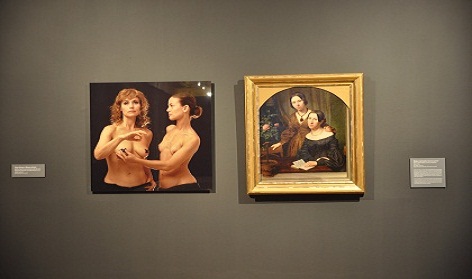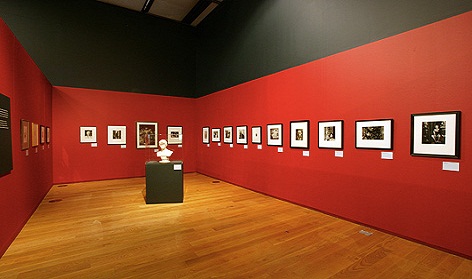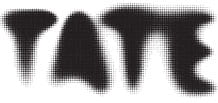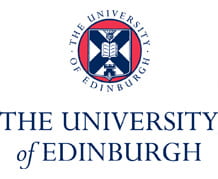Welcome
An international research network on women’s art, feminism and curating
When we created the Leverhulme- funded international research network, Transnational perspectives on women’s art, feminism and curating in 2010, feminism had had a major impact on the work of artists and curators for over forty years, and the twenty-first century had already seen major exhibitions and museum initiatives from Vienna to Los Angeles that explored art from a feminist perspective.
In spite of the force of its presence in the global art world, the relationship between feminism and art collection and presentation had had little critical analysis. Our 2010/11 research network on the theme of Transnational perspectives on women’s art, feminism and curating was formed to establish an international community of scholars and curators who would begin to develop that analysis.

Noukogude Naine Eesti Kunstis: The Soviet Woman in Estonian Art, ©Estonian Art Museum, April 8 – September 26, 2010 Image by Stanislav Stepashko
Events
The main aim of our network was to share information and forge shared intellectual languages to develop a research practice, language and community that can accommodate the challenges presented by a globalised field of study. The network organised three symposia and four workshops allowing us to chart the research and analysis that is taking place across northern Europe and North America on feminism and curating; it provided opportunities to develop the critical and conceptual tools for studying the work of curating in relation to feminism; and it addressed specific historical and political issues in the history of art interpretation and feminism in the three regions included in the network (North America, northern Europe and post-communist Europe). As the network matured, the intention was to develop our contacts to include researchers and research from around the world.
The network’s principal activities were the organisation of three symposia and four workshop seminars.
The symposia were public events with speakers drawn from around Europe the US and Canada, whose content and themes were informed by the initial network seminar discussions. All the presentations delivered at the symposia have been fully documented.
The symposia were:
- Civil Partnerships? Feminist and Queer Curating, Tate Modern, 18 and 19 May 2012, with Civil Partnerships exhibition and end-of-project events at the University of Brighton
- Connecting the Dots: Virtuality, Technology & Feminism in the Museum, Smithsonian Museums, 22-24 September 2011
- Common Differences: Issues for Feminist Curating in Post-Socialist Europe, Tallinn, Estonia, 27-28 May 2011
The seminars were small events that were attended by members of the network institutions and distinguished invited guests. The seminars focussed on critical problems which arise in the feminist curatorial practice. The seminar discussions are documented in a short written report from the host institution. The seminars were:
- Feminisms 2011 University of Brighton, 12 March 2011
- Feminist Histories and What They Have to Do with Feminism’s Political Future University of Edinburgh, Thursday and Friday, 10-11 March 2011
- A Feminist Collection? Stockholm University, 5 February 2011
- Exhibitions, Archives and Documentation: Approaches to Bodies of Knowledge Organized by the Canadian Women Artists History Initiative 27 November 2010, Concordia University, Montreal

Photograph by Raman Tratsiuk, from the section of Ars Homo Erotica (National Museum in Warsaw 2010, curated by Pawel Leszkowicz) titled “Lesbian Imaginary”. Works: unknown German painter, portrait of Two Women, 19th century, National Museum, Warsaw. and
Tanja Ostojić and Marina Gržinić, Politics of Queer Curatorial Positions: After Rosa von Praunheim, Fassbinder and Bridge Markland, 2003
Partners
The network partners included two major museums whose research profile includes work on curating and collections- the Smithsonian Museum of American Art in Washington D.C. and Tate Modern in London – as well as academic institutions with a special interest in feminism and art studies, including the Canadian Women Artists History Initiative at Concordia University in Montreal, the Department of Art History at the University of Stockholm and the Estonian Academy of Arts, Talinn. The inclusion of museums and curators in the network alongside universities was designed to ensure that the viewpoints of practising curators were included, and to create collegial exchange between researchers in different institutional settings.
Civil Partnerships. Exhibition and publication
Part of the work of the grant was to document the partners’ activities within a series of online resources, to include: webcasts or podcasts of public symposia talks; reports on the proceedings of network seminars.
The culmination of the eighteen-month research network project, Transnational perspectives on women’s art, feminism and curating, was a symposium at Tate Modern, London with concurrent workshop and exhibition. A parallel exhibition, programme of events and celebration was held at the University of Brighton’s Grand Parade venue and a publication was produced.
The 2012 exhibition featured the newest social and sensual, feminist and queer works by the students and faculty at the University of Brighton, and especially invited international artists. It consisted of three parts: queer and feminist portraiture, the homoerotic male nude, and socially engaged activist art.










